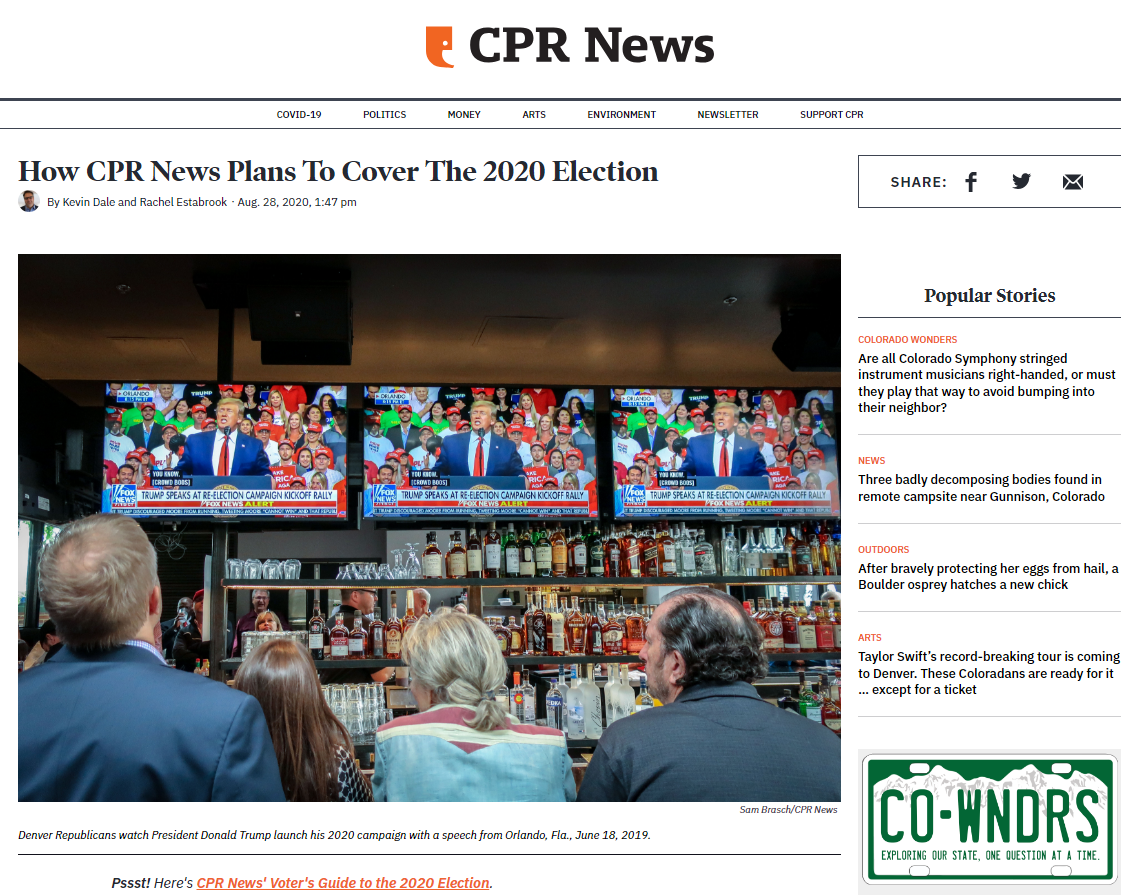
Answering questions and building public trust at the same time
How to create an FAQ about your reporting
There is a lot the public doesn’t know about how journalism works. That’s reasonable when you think about it. There’s a lot most of us don’t know about how the sausage gets made in other industries.
We wrote in another post about why and how journalists should collect and answer audience questions about how news operates, especially when it comes to covering elections and democracy. We also discussed this during a recent webinar on building trust and demystifying your newsroom as part of U.S. Democracy Day, a nationwide pro-democracy reporting collaborative.
In this post, we’ll share some easy ways to format — and continually draw audience attention to — those answers.
At the top of the list is a simple FAQ page. Unlike an official About Us page or policy page, an FAQ can feel less formal — almost like a conversation between reader and journalist. It’s also easy to add to or edit, and often doesn’t need the layers of editor approval needed for official policies.
Another feature that can make an FAQ page especially useful is the option to make an on-page link — often called an anchor tag — for each headline. (This is a common option in content management systems, so ask around if you’re not sure how to add one in yours.)
Look at this example from Colorado Public Radio. In addition to being clearly, helpfully written (which we wrote about already), each question is attached to its own link.

That accomplishes two things:
- It lets readers on the page skip to a section they’re interested in.
- It lets the staff use the links to draw attention to specific questions as they come up in stories and social posts.
The Texas Tribune takes it a step further. The team created an explainer piece: What you can expect from our elections coverage. The piece included links to each question.
The added element here is that the FAQ was turned into an embed that appeared on election stories.
Once you have those links, share them anywhere that works for your team. How about comments, when someone writes something accusatory or uninformed about your work? How about emails?
How about on social media?
After the Seattle Times answered questions about their journalism on their website, they took the answers to an Instagram story.
How about as inline links within stories? How about in editor’s notes, italicized at the top of stories?
It’s important to bring the explanations into your day-to-day coverage
Anywhere people encounter your journalism is an opportunity for them also to learn about how you operate. That’s true on your website, in your newscasts, in your newsletters, on social platforms … anywhere.
Related resource: Find many more examples of what transparency looks in day-to-day journalism in this Trust Kit.
And remember this: The best opportunity to pique people’s curiosity about how you operate is within related coverage.
When do people wonder if you cover candidates equally and fairly? When they’re reading coverage of one candidate and either wondering or making assumptions about whether you’d cover other candidates similarly.
When are they curious or skeptical of your sourcing? When they encounter a story with unusual or sensitive sourcing.
If you do not link back to your explanations in daily coverage, it’s less likely people will see the explanations and give you credit for the careful, ethical reporting you’re aiming for.
Do what works for your team
The key is to get on the record about how and why you make coverage decisions, and then to remind your audience regularly what kind of journalism you’re committed to doing.
Consider where you connect best with your audience and use those platforms or formats to provide information not just about what you cover but also about your integrity, ethics, processes and staff.
Let us know what you try!
Our team at Trusting News would love to see how you get on the record about your work, and we’re also happy to provide feedback. Send us a link at info@TrustingNews.org.
And find more strategies in our weekly newsletter, Trust Tips, and in our new Trust Kits, which provide step-by-step instructions for the basics of earning trust.
At Trusting News, we learn how people decide what news to trust and turn that knowledge into actionable strategies for journalists. We train and empower journalists to take responsibility for demonstrating credibility and actively earning trust through transparency and engagement. Learn more about our work, vision and team. Subscribe to our Trust Tips newsletter. Follow us on Twitter and LinkedIn.

Executive Director Joy Mayer (she/her) founded Trusting News in 2016 after a 20-year career in newsrooms and teaching. She lives in Sarasota, Florida, and can be reached at joy@TrustingNews.org.



